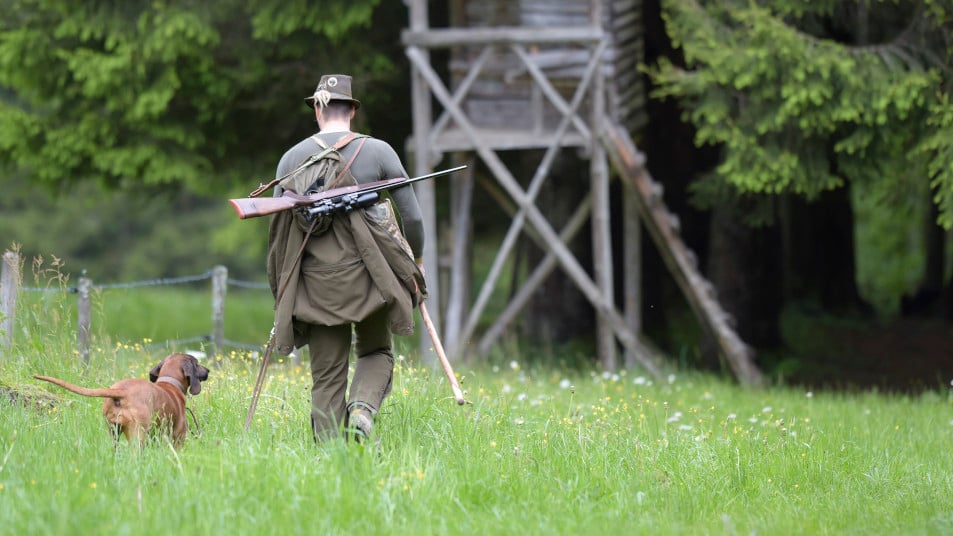Riflescopes
A good riflescope is the key to success, whether on the shooting range or when hunting. We address the most important questions around mechanics, design, image quality and magnification.

How is the exit pupil calculated?
The exit pupil is calculated by dividing the lens diameter by the magnification, so for 8x56 this would be:
(56/8) = 7mm
The human eye gains no additional benefit from an exit pupil larger than 7mm.
What is an objective?
An objective is the end of the riflescope that is facing the object/target to be observed.
What is an eyepiece?
An eyepiece is the end of the riflescope that faces the eye of the observer.
What does focusing mean?
Focusing is the sharpening of an object seen through an optical device from varying distances.
What does internal focusing mean?
When the optical device can be focused without moving the external lens element or parts of the housing, this is called internal focusing.
What is a monocular?
A monocular is a device designed for viewing with one eye, such as a telescope or a riflescope.
What does coating mean?
Coating refers to the improvement of the optical properties by applying thin (i.e. in the μ-meter range) layers of a material to the surface. The type of coating is important for light transmission or for filtering unwanted wavelengths of light that could negatively affect true-colour rendition, or to reduce reflection on the optical surfaces.
What is the field of view?
The area that can be seen through the riflescope is called the field of view.
What does variable magnification mean?
Binoculars, spotting scopes and riflescopes have either fixed or adjustable magnification. For example, a 3-12x56 is a device that delivers a magnification range of 3 to 12 times. The last value (56) refers to the diameter of the lens. Variable magnification means that you can decide which magnification to use, depending on your distance from the target.
What is the twilight factor?
The twilight factor provides information about the riflescope’s performance (image resolution) at twilight. Simply put, it is the calculated performance of the binoculars or riflescope under minimal light conditions.
The twilight factor is calculated as follows: square root of the magnification multiplied by the lens diameter. For example, a 8x56 riflescope has a twilight ratio of:
√(8x56) =√448= 21.2
What is a reticle?
The target (cross-hair, dot, etc.) that is built into the device is referred to as the reticle; it can come in various designs. Common forms are the crosshair (of varying thickness) or a (light) point.
What is a centre reticle?
A reticle that remains in the centre of the field of view even after the reticle adjustment has been activated. Older riflescopes usually do not have a centre reticle.
In which image plane should the reticle be?
The plane in which the reticle should lie depends primarily on the application, the type of reticle, and user preference. There are two possible locations, since the light inside a riflescope intersects at two points. The first point of intersection is behind the lens, in this case the reticle is mounted on the lens side of the adjustable inner scope tube. The second point of intersection is at the other end of the inner tube, facing the ocular. The effective difference is that the lenses responsible for magnification are mounted between these two possible positions. A position in front of the magnification lenses means that the reticle changes in size, becoming larger as magnification increases. Mounting behind the magnification lenses only magnifies the target image, the reticle size does not change. Therefore the relationship between reticle size and target image size changes as the magnification changes.
The advantage of a reticle in the first focal plane (objective image plane, European design type) is that the range marker information is consistent, but the disadvantage is that the reticle is almost invisible at low magnification and may cover a small target at high magnification. They are therefore suitable for riflescopes with a low magnification range.
In the case of a reticle in the second focal plane (eyepiece image plane; American construction type), the range marker is only correct for a specific magnification, and the size of the reticle is fixed regardless of magnification. They are therefore easy to read at any magnification and do not obscure the target. This means that they are suitable for riflescopes with a large magnification range.
Can you also adjust the reticle?
Modern riflescopes have horizontal and vertical reticle adjustment. Older ones often only have horizontal adjustment. This horizontal adjustment is made by moving the mounting foot laterally.
Apart from a handful of exceptions, newer riflescopes are adjusted using a click-dial. In the case of European-produced riflescopes, the reticle adjustment is usually 1cm per click.
Non-European products usually have a ¼ MOA adjustment (MOA = minute of angle), which corresponds to around 7mm at 100m.
Which magnification is used for which application?
- Drive hunting = low magnification 1 to 4 times
- Stalking/hide = 1.5 to 12 times
- For twilight/night hide = high magnification 3 to 12 times
What is a mount?
A mount is the arrangement used to attach a riflescope to a weapon.
